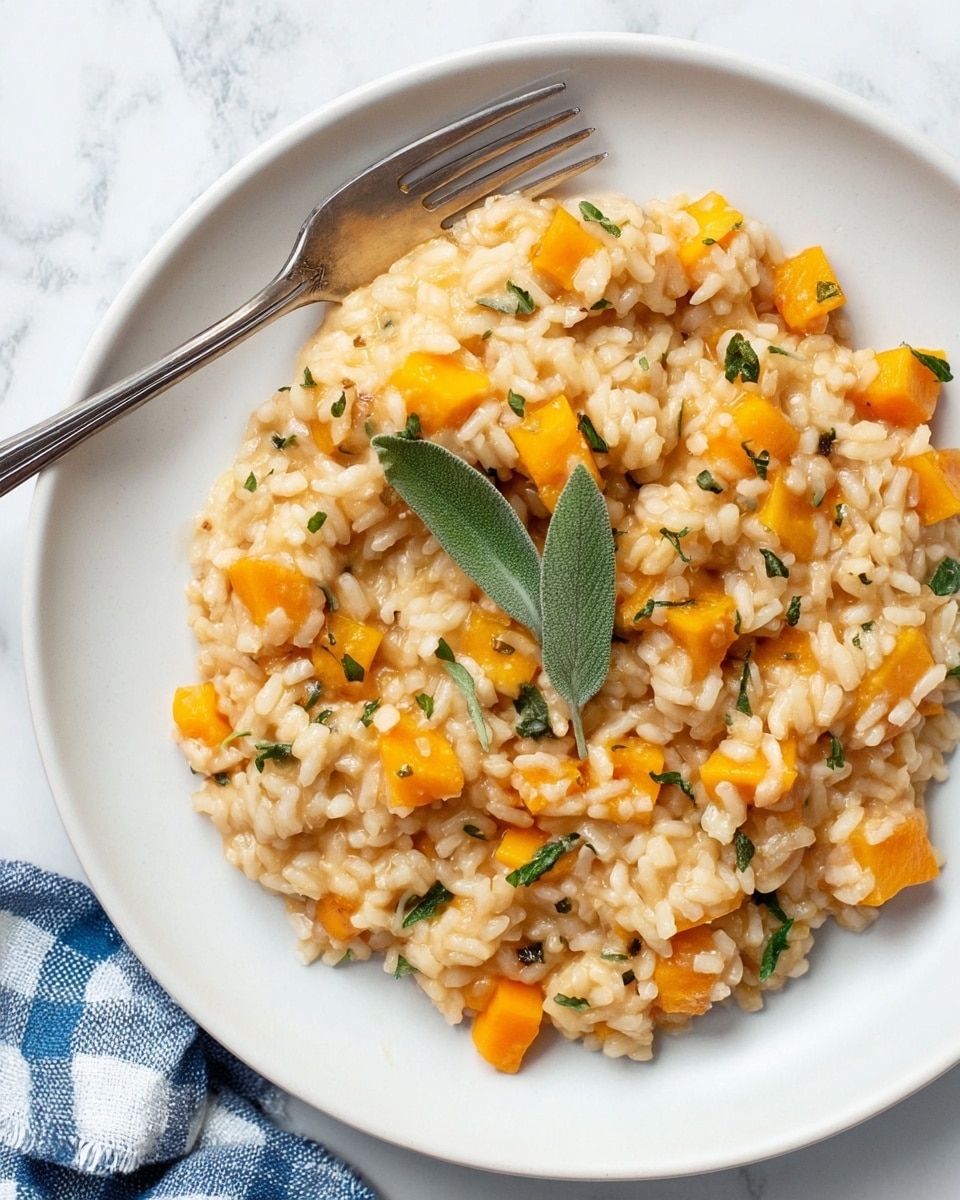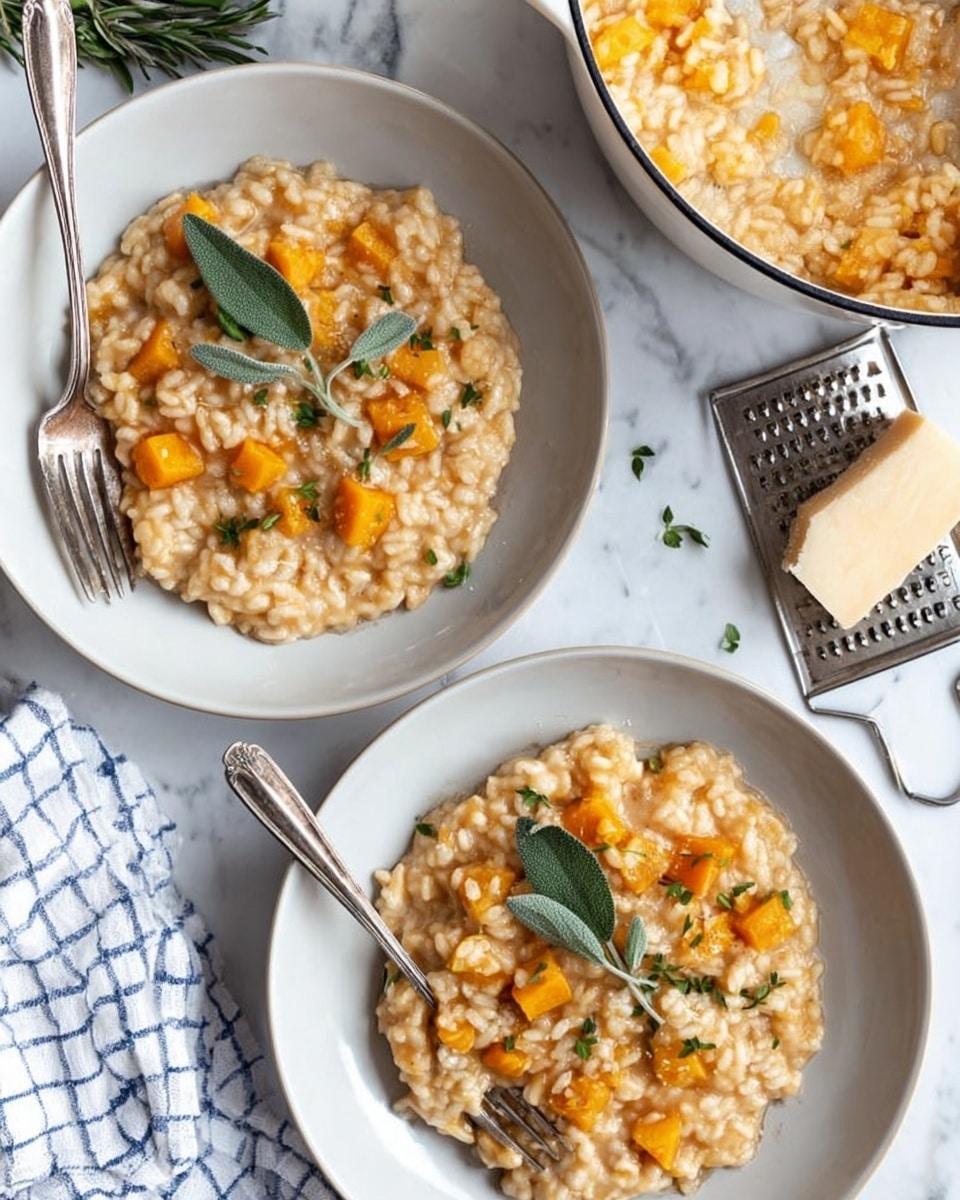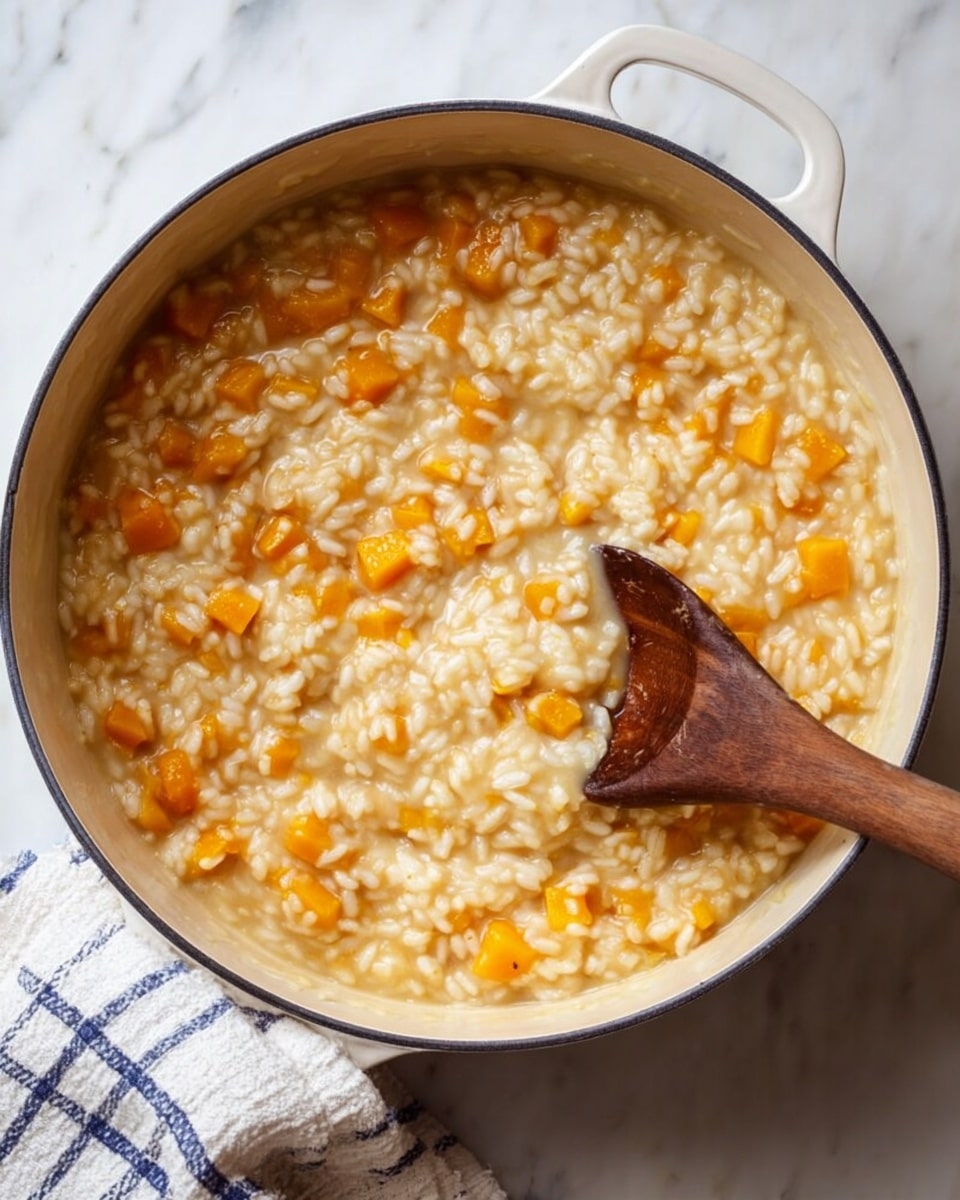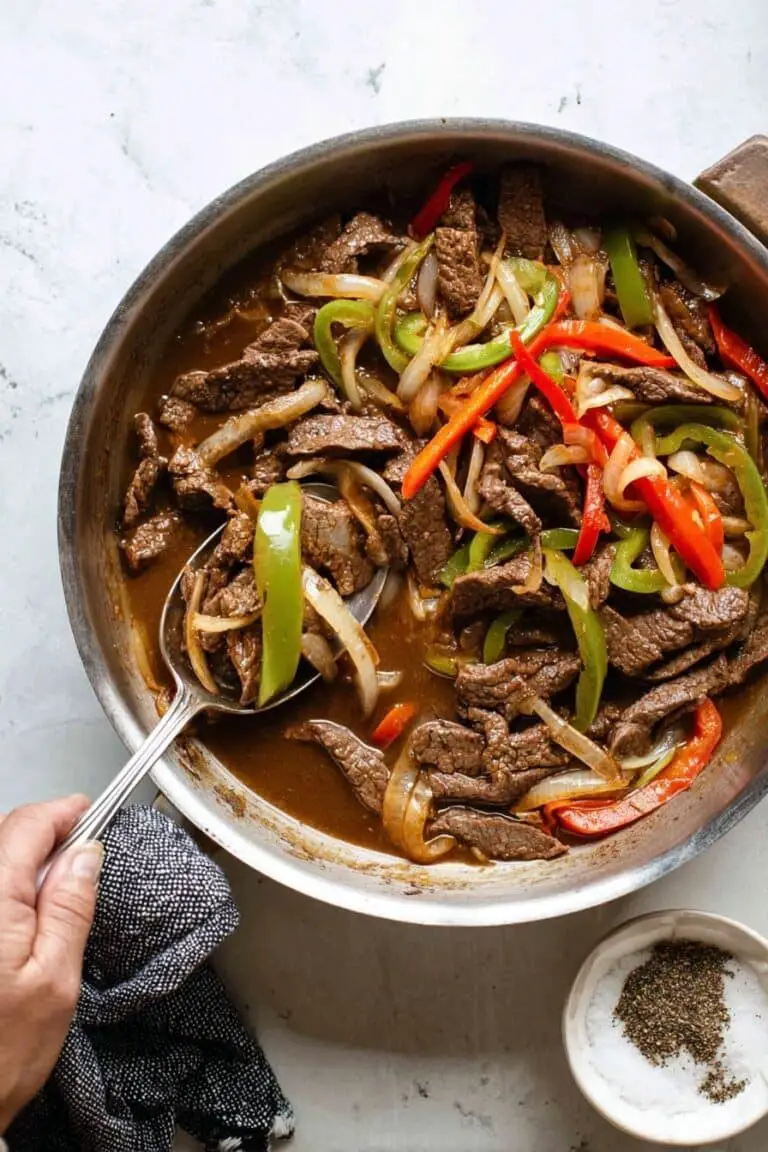If you’re craving something cozy and creamy that feels like a warm hug in a bowl, this Butternut Squash Risotto Recipe is going to become your new favorite. I absolutely love how this dish balances the subtle sweetness of roasted butternut squash with the rich, velvety texture of risotto. It’s comforting enough for a weeknight dinner but special enough to serve guests. Stick with me—I’ll walk you through the steps to help you nail this dish every time.
Why You’ll Love This Recipe
- Simple Ingredients: Uses basic pantry staples with seasonal butternut squash for a fresh flavor.
- Creamy Comfort Food: Achieves that classic risotto creaminess without needing tons of cheese or cream.
- Versatile and Customizable: You can easily tweak the herbs or garnish to suit your taste.
- Impress Without Stress: With a bit of stirring, anyone can pull off a restaurant-worthy risotto at home.
Ingredients You’ll Need
The magic of this Butternut Squash Risotto Recipe lies in its quality ingredients that blend effortlessly – creamy Arborio rice, sweet diced squash, fragrant herbs, and a splash of white wine for depth. If you can, pick a fresh, firm butternut squash and a good vegetable broth to boost flavor.
- Extra-virgin olive oil: Adds richness and helps soften vegetables without overpowering flavor.
- Yellow onion: Provides a sweet, savory base that deepens the risotto’s flavor.
- Sea salt & black pepper: Essential for seasoning and bringing out the best in every ingredient.
- Butternut squash: Choose firm, fresh squash and cut into small cubes so it cooks evenly and melts into the risotto.
- Garlic cloves: Just a couple of finely chopped cloves give a gentle aromatic lift.
- Fresh rosemary or sage: The herbs make a huge difference; fresh is best, but dried works in a pinch.
- Arborio rice: The star of any risotto—its starchy texture creates that creamy mouthfeel.
- Dry white wine: Adds acidity and complexity—be sure it’s something you’d drink.
- Vegetable broth: Keep it warm and add gradually; this is key to cooking the rice perfectly.
- Parsley or sage leaves: Optional garnish to brighten the finished dish.
- Grated pecorino or Parmesan cheese: Also optional but highly recommended for extra savory richness.
Variations
I love playing around with this recipe depending on the season or what’s on hand. You can easily make it your own with just a few tweaks—you’ll find that butternut squash risotto is a great canvas for flavors.
- Adding Protein: I often stir in cooked crispy bacon or sautéed mushrooms for an extra meaty, umami punch when feeding my family.
- Dairy-Free Version: Swap out the cheese for nutritional yeast or skip it altogether; the creaminess from the rice and squash is enough on its own.
- Herb Swap: While rosemary or sage work beautifully, I’ve experimented with thyme or even a bit of fresh basil for a summer twist.
- Spiced Risotto: For a warming twist, add a pinch of smoked paprika or a dash of nutmeg along with the herbs.
How to Make Butternut Squash Risotto Recipe
Step 1: Sauté Your Aromatics
Start by heating the olive oil in a large skillet over medium heat. Toss in the chopped onion with a pinch of sea salt and fresh pepper, then cook for 2 to 3 minutes until the onion softens and smells sweet. This step lays the flavor foundation, so don’t rush it. I always keep an eye so the onions don’t brown too much here.
Step 2: Cook the Butternut Squash
Next, add the cubed butternut squash to the skillet. Stir it around and let it cook for 6 to 8 minutes until it’s just tender but still holds its shape. This takes a little patience, but it’s worth it because the squash will soften more once it cooks with the rice.
Step 3: Toast the Rice and Add Garlic + Herbs
Once your squash is tender, stir in the garlic cloves and the minced rosemary or sage. Then add your Arborio rice and gently toast it with the mix for about one minute, stirring constantly. You’re aiming for a light nutty aroma, which means the rice is ready for the next step.
Step 4: Deglaze with White Wine
Pour in the dry white wine and stir continuously as it simmers and reduces, about 1 to 3 minutes. This brightens the dish and gives it a lovely layer of acidity. This is one of those steps I learned to be patient with—the wine needs to cook down well, or the risotto tastes too sharp.
Step 5: Add Warm Broth Gradually
Now the fun part: adding your warmed vegetable broth, about ¾ cup at a time. Pour it in, stir gently but consistently, and wait until the liquid is almost fully absorbed before adding more. This process usually takes about 30 minutes. The constant stirring helps release the rice’s starches, creating that signature creamy texture. This step is key—don’t rush, and keep your broth warm so the temperature stays steady.
Step 6: Finish and Season to Taste
When the butternut squash is tender and the risotto is creamy yet still a bit chewy in the center, taste and adjust salt and pepper as needed. If you like, stir in grated Parmesan or pecorino cheese right at the end for richness. Then garnish with fresh parsley or sage leaves and serve immediately.
Pro Tips for Making Butternut Squash Risotto Recipe
- Keep Broth Warm: I learned that adding cold broth slows down cooking and messes with the risotto’s texture, so warm it on the stove beforehand.
- Stir Consistently: Stirring releases the rice’s starch, making the dish creamy—don’t skip or half-heartedly do this.
- Cut Squash Small: Small, uniform cubes cook evenly and blend nicely with the rice so you don’t bite into huge chunks.
- Taste as You Go: Trust your palate to adjust salt and seasoning; risotto often needs a bit more salt at the end.
How to Serve Butternut Squash Risotto Recipe

Garnishes
I usually keep it simple with fresh parsley for color and brightness or a few small sage leaves lightly toasted in butter to echo that earthy herbaceous note from the recipe. And of course, a generous sprinkle of freshly grated Parmesan or pecorino cheese always steals the show.
Side Dishes
This risotto is a great centerpiece, but I love pairing it with a crisp green salad dressed with lemon vinaigrette or some roasted autumn vegetables like Brussels sprouts or asparagus to add freshness and crunch contrast.
Creative Ways to Present
For a special dinner, I’ve served this risotto in shallow bowls with edible flowers or microgreens sprinkled on top. Another fun idea is to use roasted butternut squash half shells as edible bowls for a rustic, charming presentation that always gets compliments.
Make Ahead and Storage
Storing Leftovers
I usually transfer leftovers to an airtight container and store them in the fridge for up to 3 days. Because risotto thickens as it cools, it can be a little firm but reheats beautifully with a splash of broth to loosen it back up.
Freezing
Although risotto is best fresh, I have frozen leftovers in sealed containers. When thawed slowly in the fridge, it reheats okay, but the texture changes slightly. If you plan to freeze, leave out the cheese and add it fresh when reheating.
Reheating
The trick I’ve learned is reheating gently on the stove or in the microwave with a little warm vegetable broth or water stirred in until it loosens and regains its creamy consistency. Avoid overheating to keep the risotto from drying out.
FAQs
-
Can I make this Butternut Squash Risotto Recipe vegan?
Absolutely! Simply use a vegan-friendly vegetable broth and skip the cheese or substitute with a vegan cheese alternative or nutritional yeast for that cheesy flavor boost.
-
What kind of rice is best for risotto?
Arborio rice is the classic choice due to its high starch content which creates the creamy texture that defines risotto. Other short-grain rice varieties like Carnaroli or Vialone Nano also work well if you can find them.
-
Can I make this risotto ahead of time?
You can prepare the risotto a few hours ahead and store it in the fridge, but I recommend finishing the last step of adding broth and cheese right before serving to preserve its creamy texture.
-
Why does risotto require constant stirring?
The stirring helps release the starch from the rice, which gives risotto its luscious, creamy consistency. It also prevents the rice from sticking to the pan or cooking unevenly.
-
What if I don’t have white wine?
If you prefer to skip wine, you can substitute with an equal amount of vegetable broth and add a splash of lemon juice or a tiny bit of vinegar to mimic wine’s acidity.
Final Thoughts
I still remember the first time I made this Butternut Squash Risotto Recipe—it was a chilly evening, and as the warm, fragrant aroma filled the kitchen, I knew I had a winner. It felt like such a comforting hug, and my family couldn’t get enough. I promise, once you get the steps down, it’s not intimidating at all, and you’ll enjoy that creamy richness with each bite. Give it a try and make it your own; I can’t wait to hear how it turns out for you!
Print
Butternut Squash Risotto Recipe
- Prep Time: 15 minutes
- Cook Time: 40 minutes
- Total Time: 55 minutes
- Yield: 4 servings
- Category: Main Dish
- Method: Stovetop
- Cuisine: Italian
- Diet: Vegetarian
Description
A creamy, comforting butternut squash risotto featuring tender squash cubes, aromatic rosemary, and a rich blend of Parmesan cheese. Perfect as a satisfying vegetarian main or a hearty side dish for any meal.
Ingredients
Main Ingredients
- 1 tablespoon extra-virgin olive oil
- 1 medium yellow onion, chopped
- ½ teaspoon sea salt, plus more to taste
- Freshly ground black pepper
- 2 cups cubed butternut squash, ¼-inch cubes
- 2 garlic cloves, finely chopped
- 1 teaspoon minced rosemary or sage
- 1 cup uncooked Arborio rice
- ½ cup dry white wine
- 4 cups warmed vegetable broth
Optional Garnishes
- Chopped parsley or small sage leaves
- ½ cup grated pecorino or Parmesan cheese
Instructions
- Heat Oil and Sauté Onions: In a large skillet, heat the extra-virgin olive oil over medium heat. Add the chopped onion, ½ teaspoon sea salt, and several grinds of freshly ground black pepper. Cook for 2 to 3 minutes until softened and fragrant.
- Cook Butternut Squash: Add the cubed butternut squash to the skillet. Cook for 6 to 8 minutes, stirring occasionally, until the squash starts to soften but still holds its shape.
- Add Garlic, Herbs, and Rice: Stir in the finely chopped garlic and minced rosemary or sage. Add the Arborio rice and stir well. Let the rice cook for about 1 minute to lightly toast and absorb flavors.
- Deglaze with White Wine: Pour in the dry white wine. Stir continuously and cook for 1 to 3 minutes until most of the wine has evaporated and the mixture thickens slightly.
- Add Broth Gradually: Begin adding the warmed vegetable broth, about ¾ cup at a time. Stir continuously and wait until the broth is mostly absorbed before adding the next portion. Continue this process until the rice is creamy and tender, and the butternut squash is fully cooked. This should take around 20 to 25 minutes.
- Season and Serve: Taste and adjust seasoning with additional salt and pepper if needed. Garnish with chopped parsley or sage leaves, and sprinkle with grated pecorino or Parmesan cheese if using. Serve immediately for a warm, comforting meal.
Notes
- Use warm vegetable broth to speed up the absorption and cooking process.
- Stirring continuously while adding broth is key to a creamy risotto texture.
- You can substitute rosemary with sage for a different herbal flavor.
- For a vegan version, omit the cheese or use a vegan alternative.
- Dry white wine can be replaced by additional broth if preferred or to avoid alcohol.
Nutrition
- Serving Size: 1 cup
- Calories: 350
- Sugar: 4g
- Sodium: 600mg
- Fat: 10g
- Saturated Fat: 2.5g
- Unsaturated Fat: 7g
- Trans Fat: 0g
- Carbohydrates: 54g
- Fiber: 4g
- Protein: 8g
- Cholesterol: 5mg









